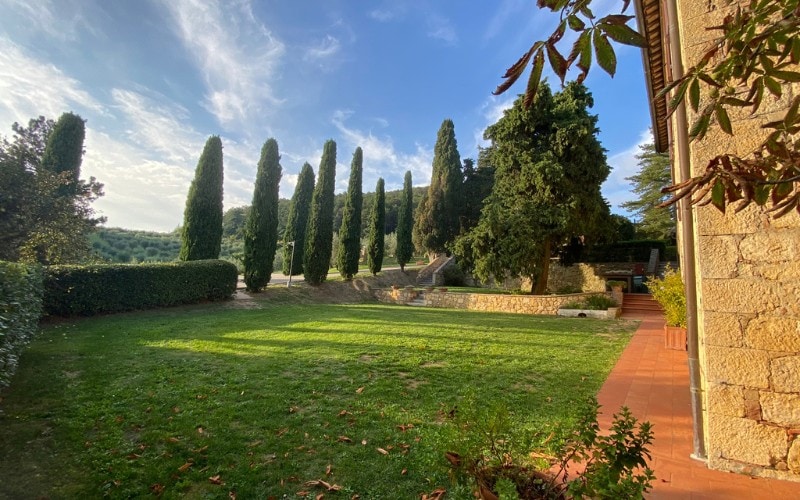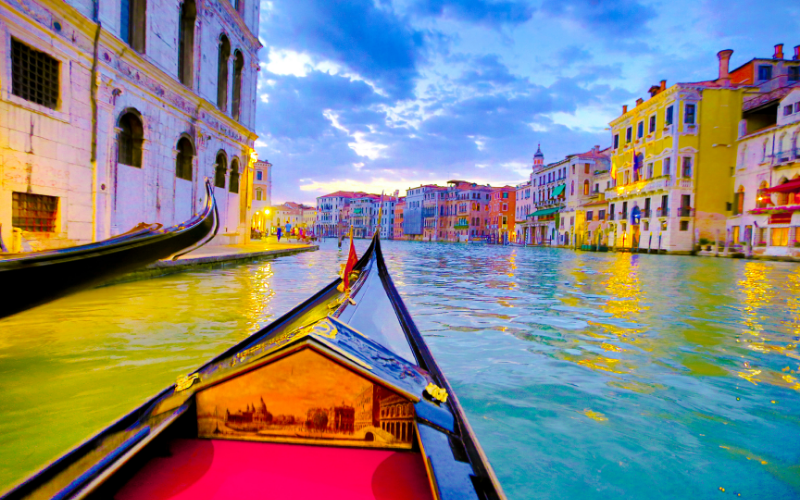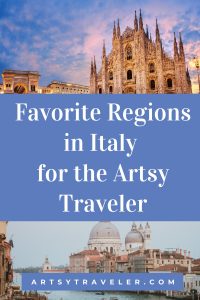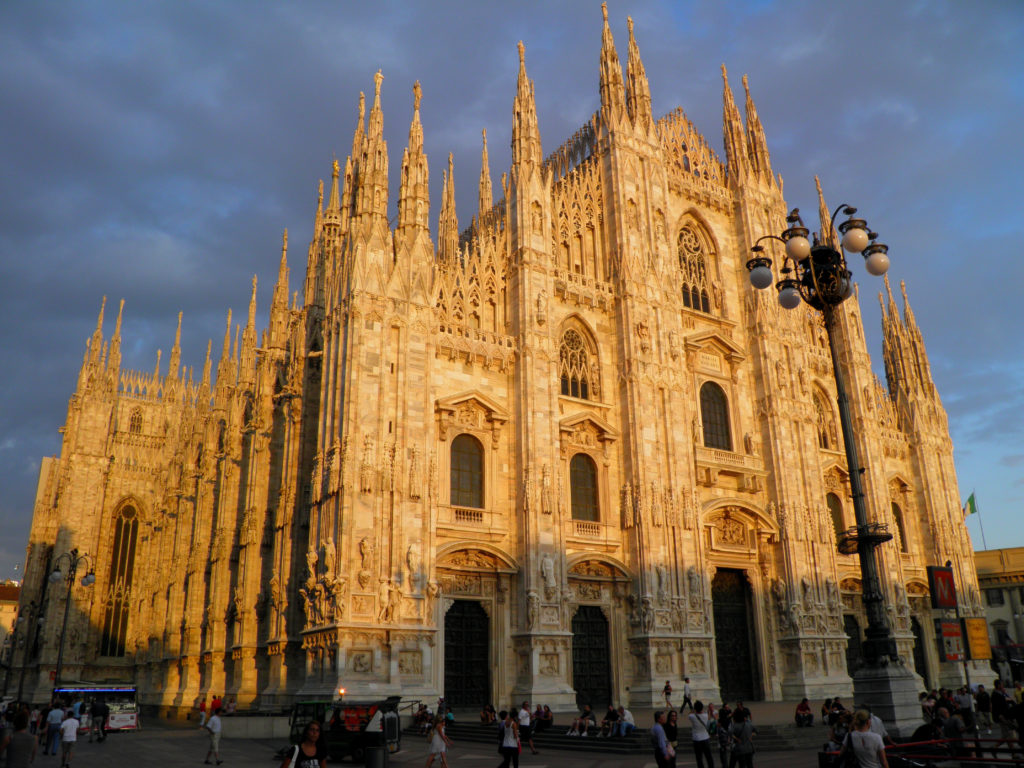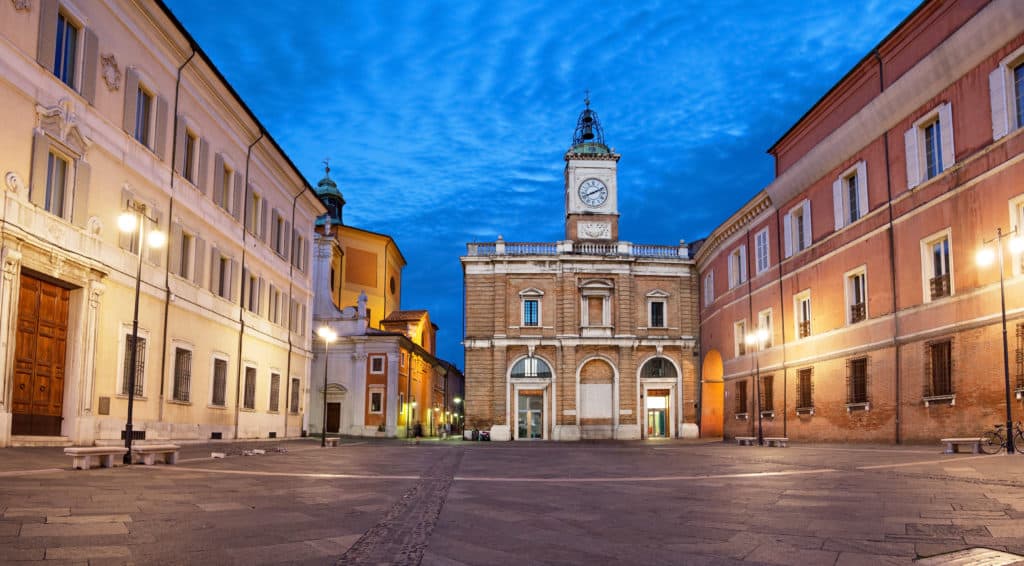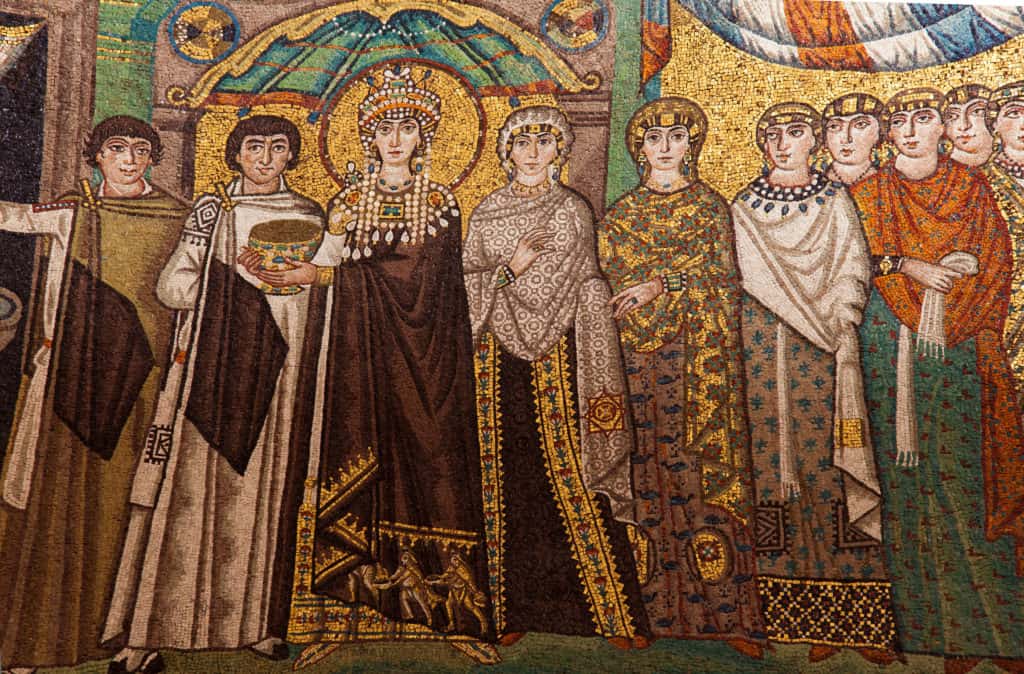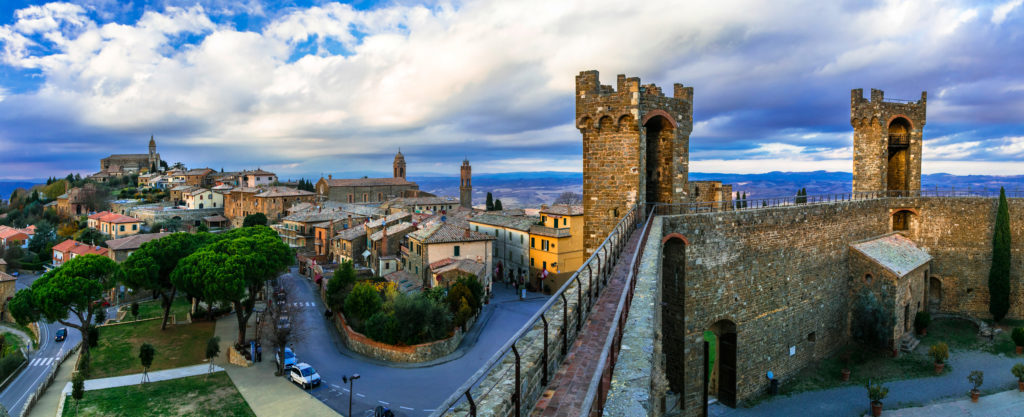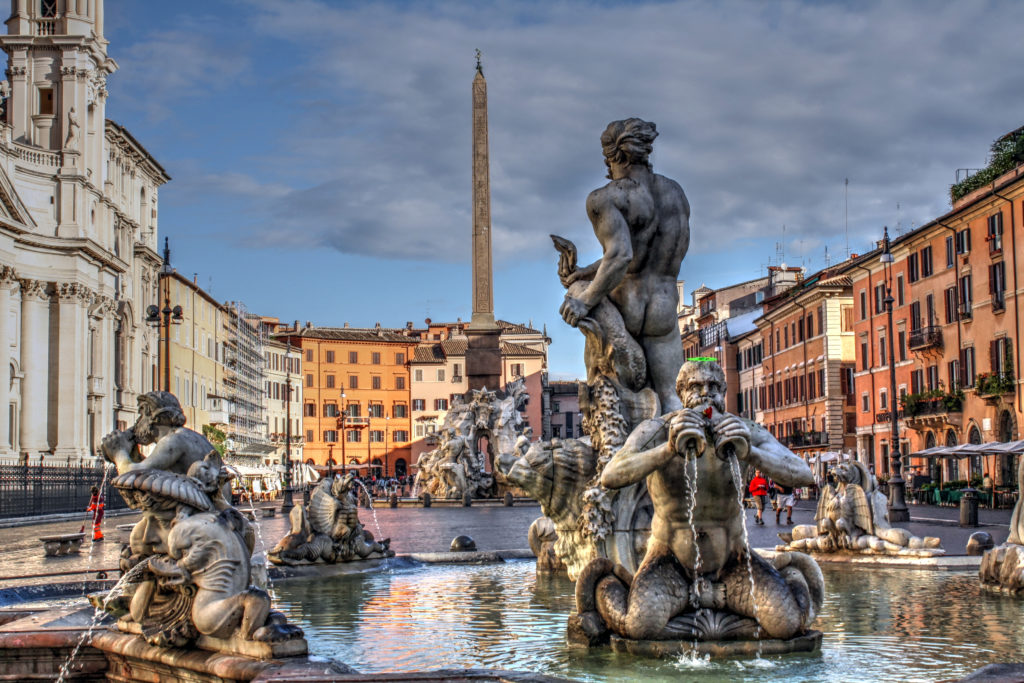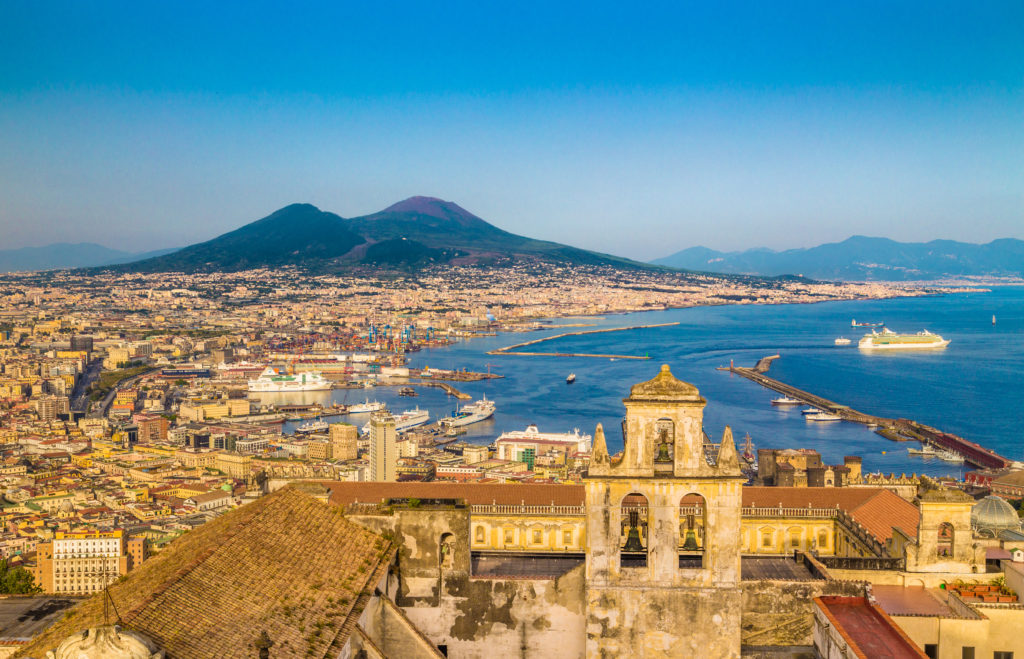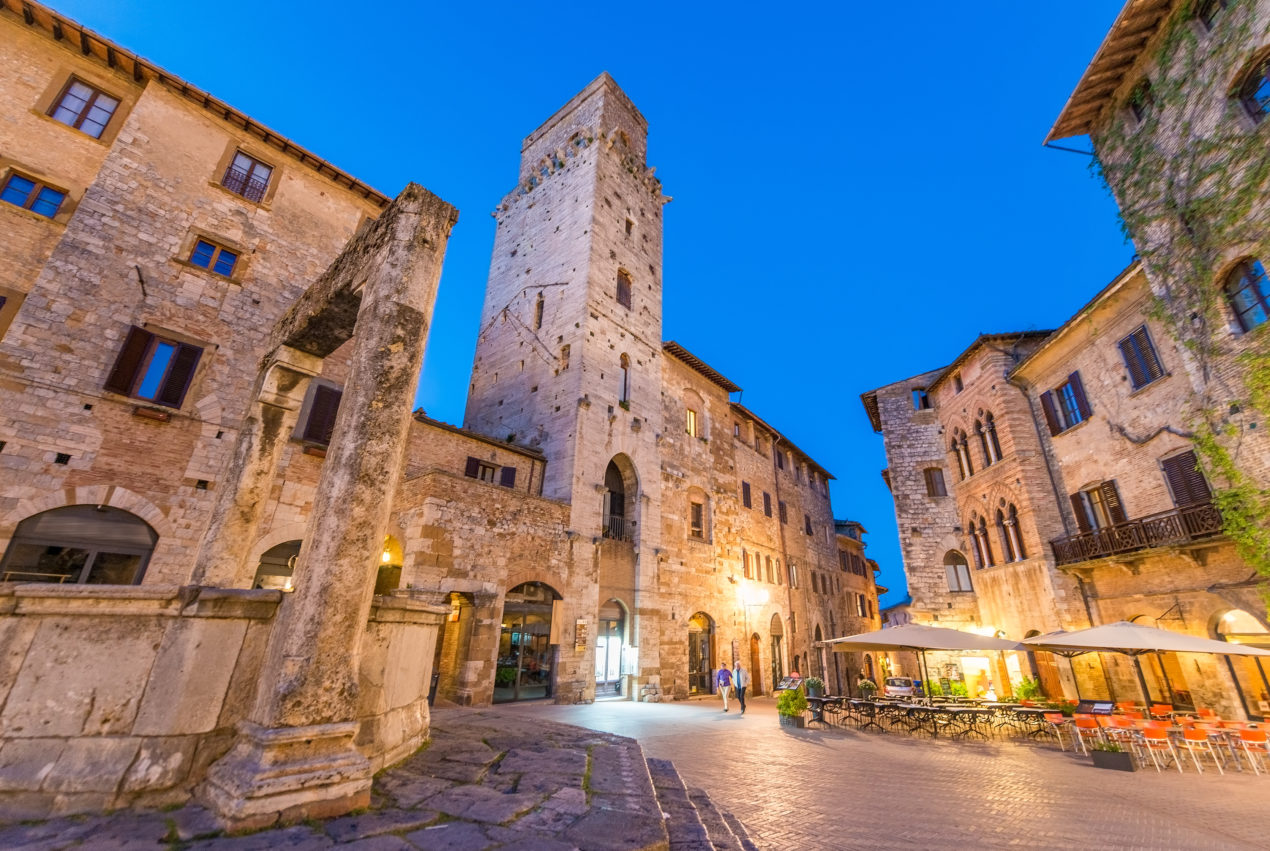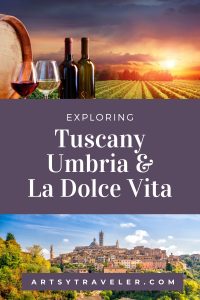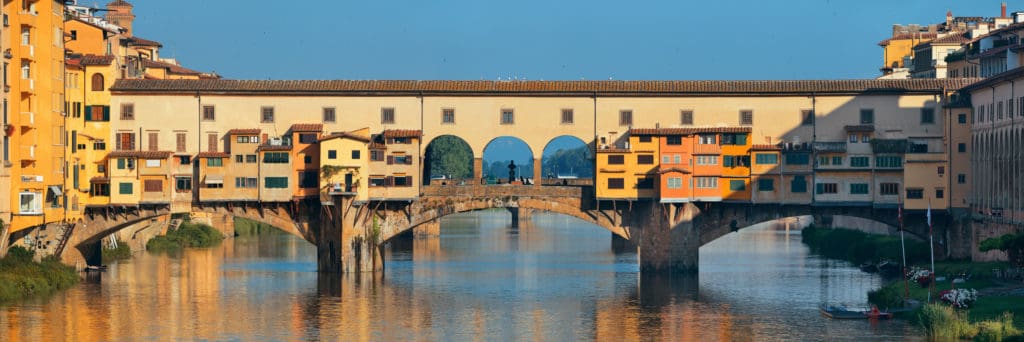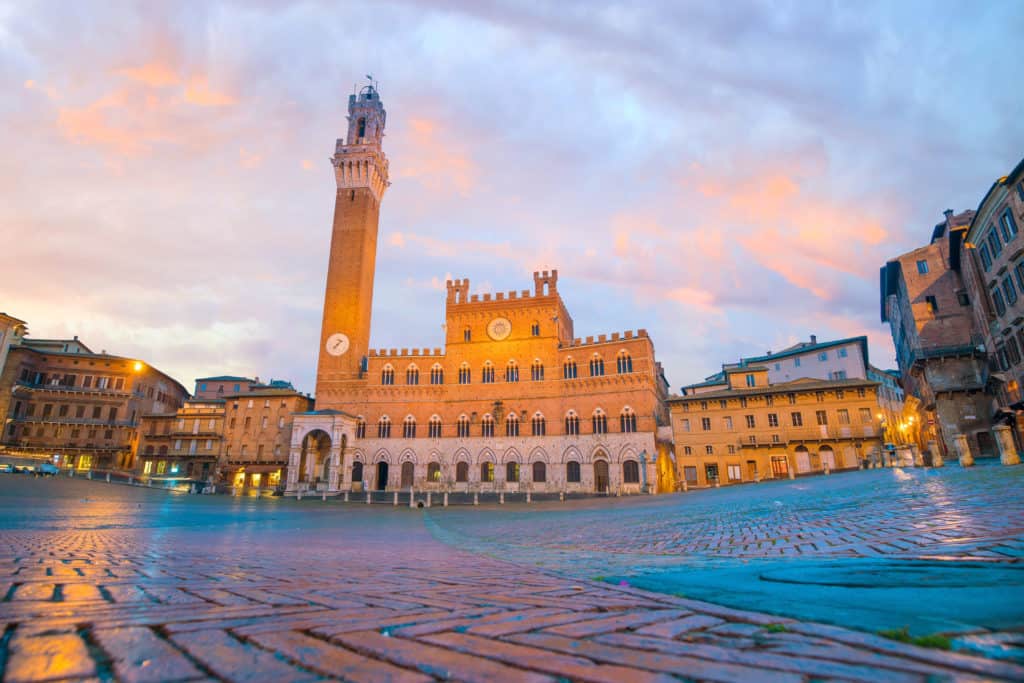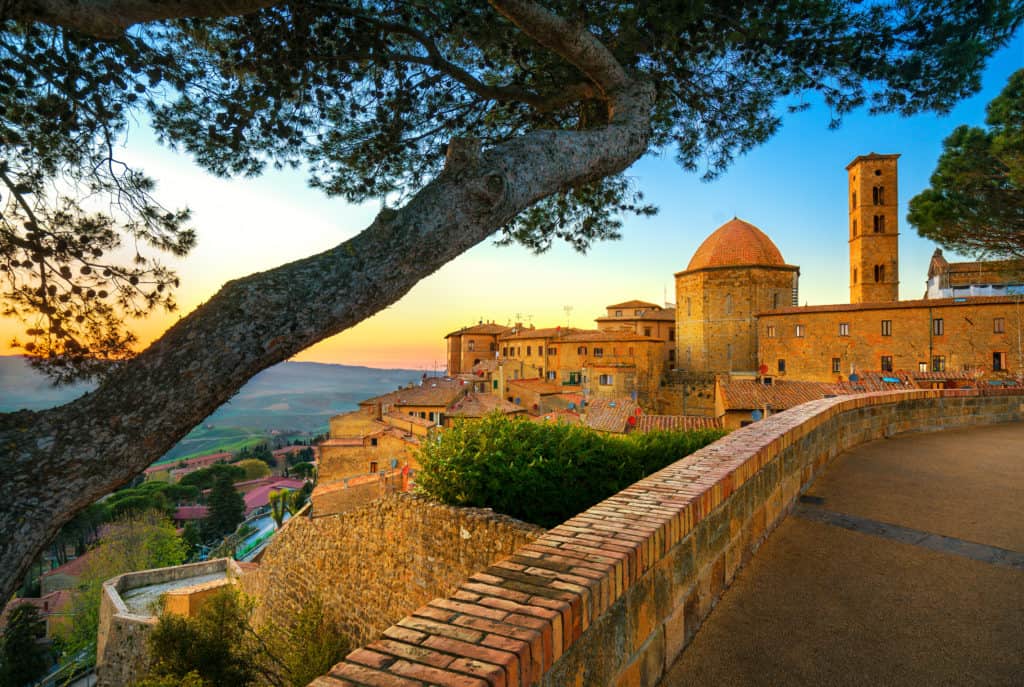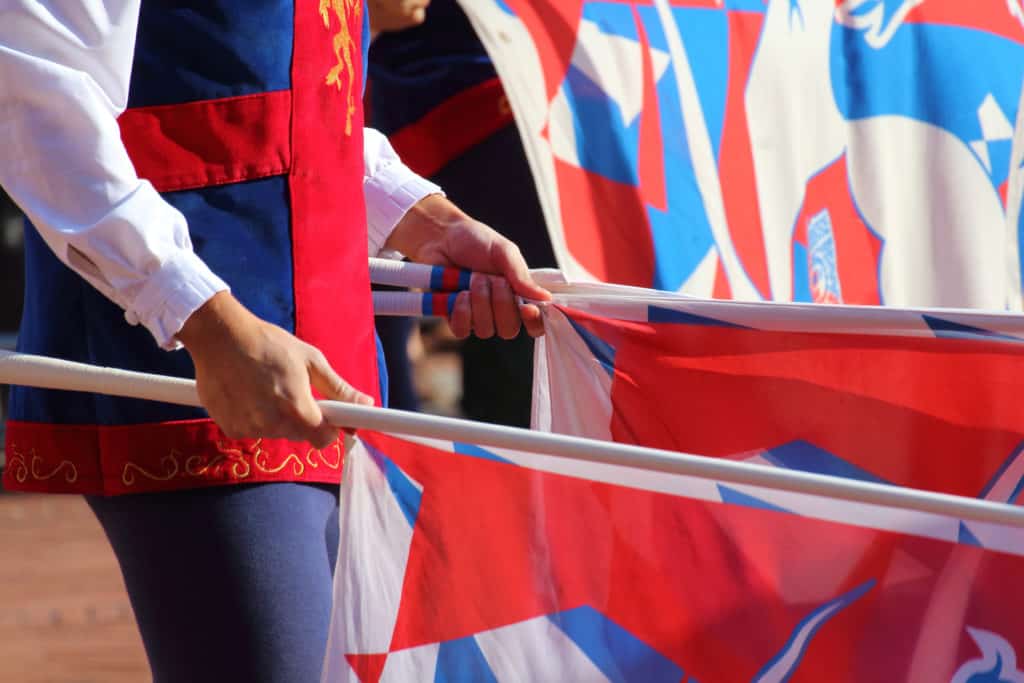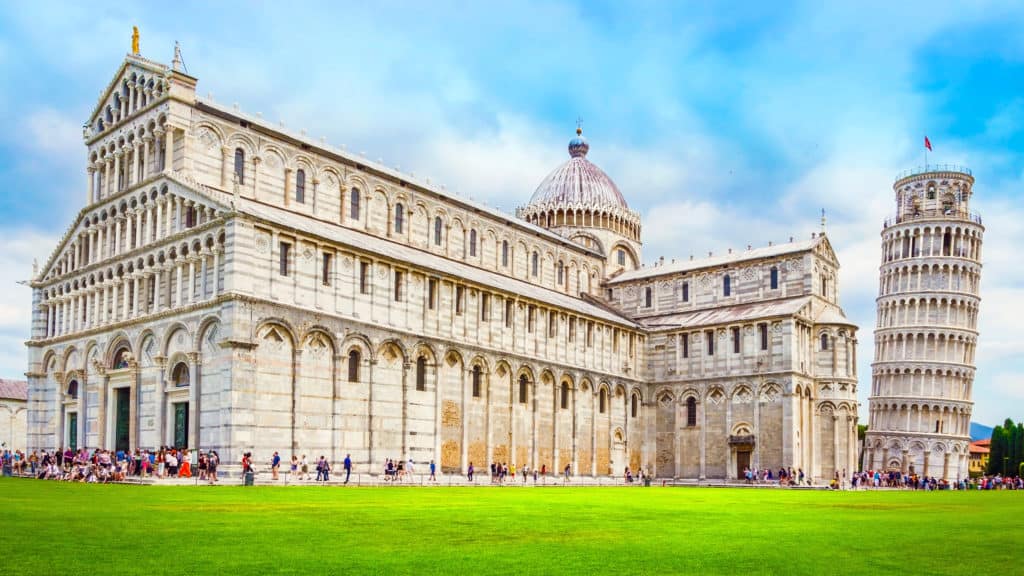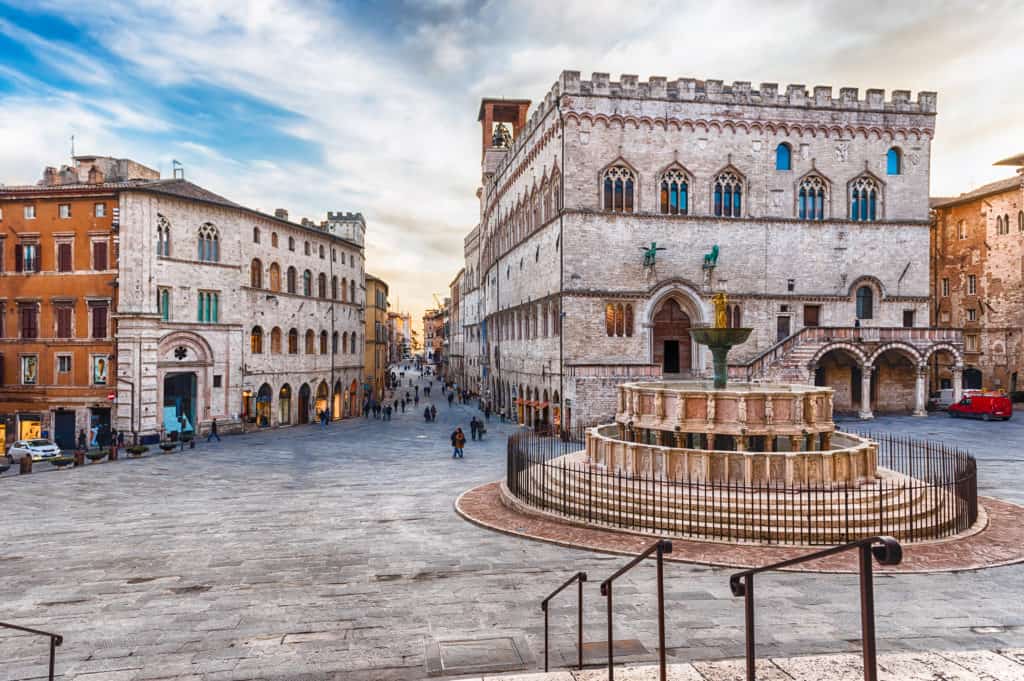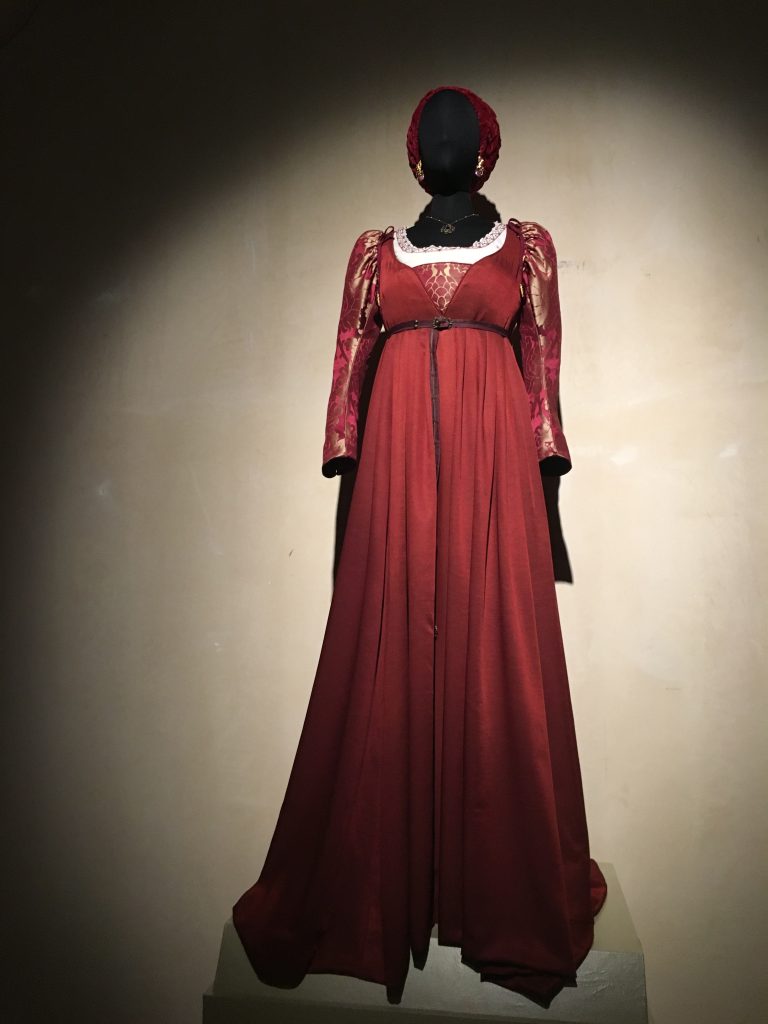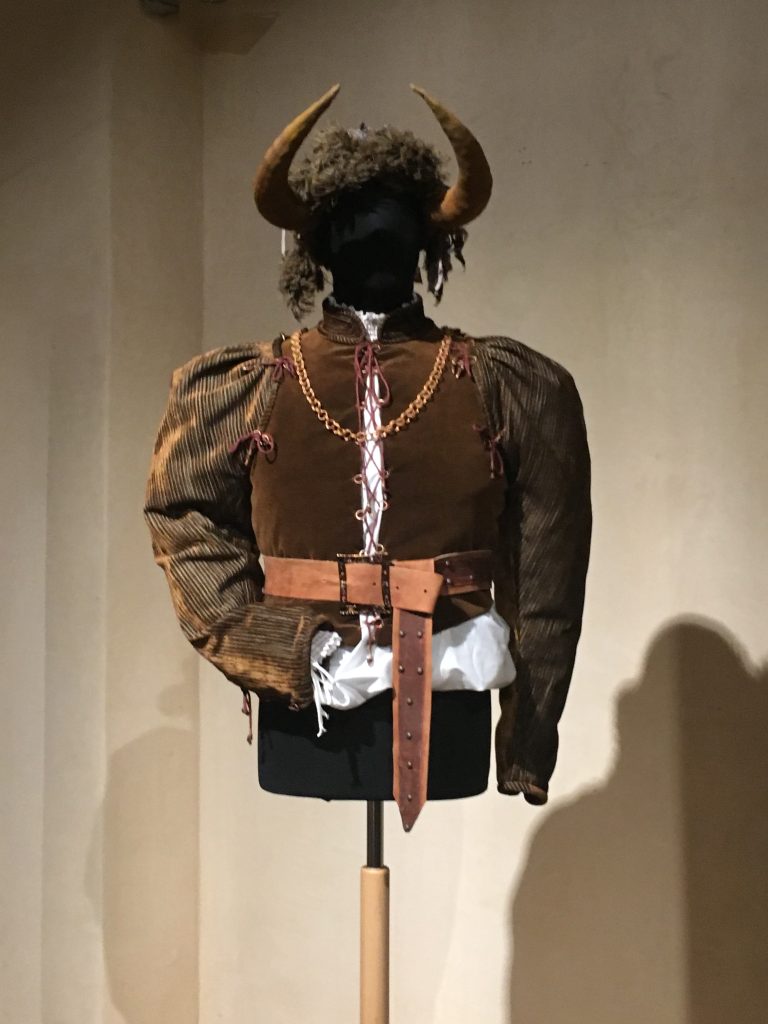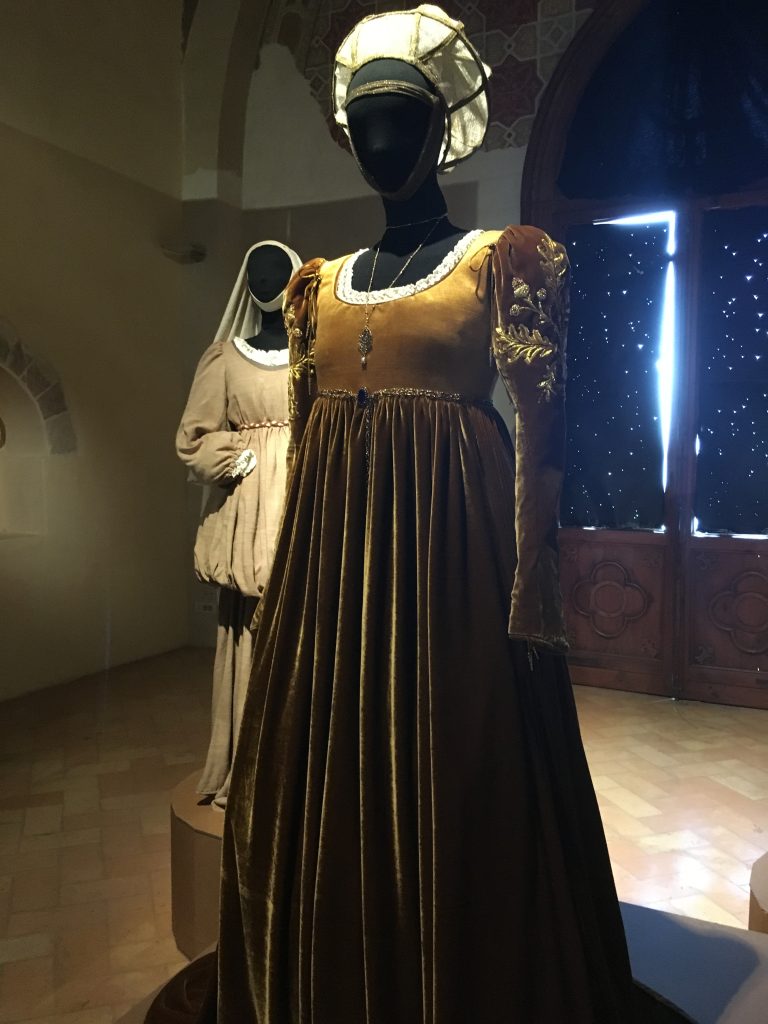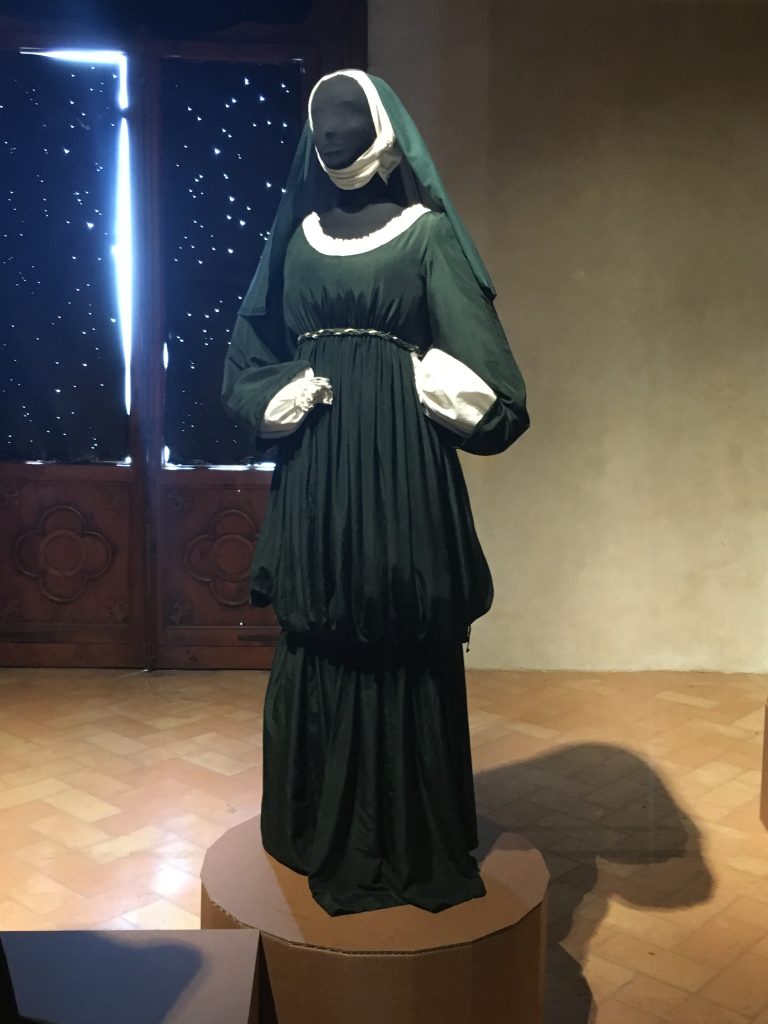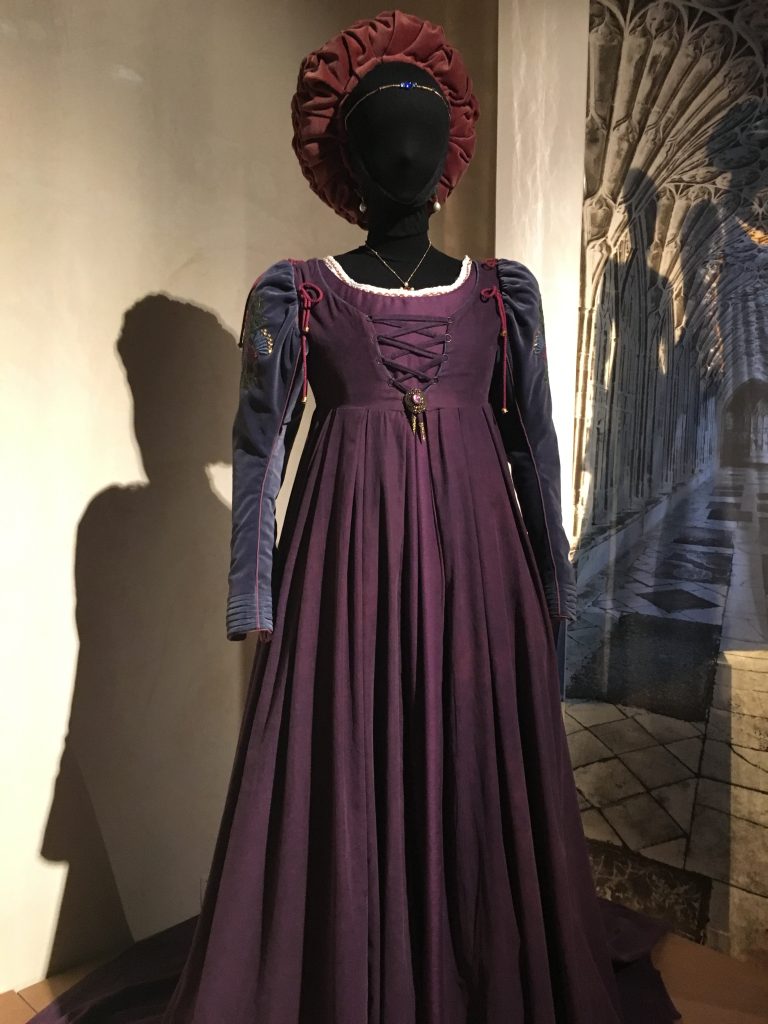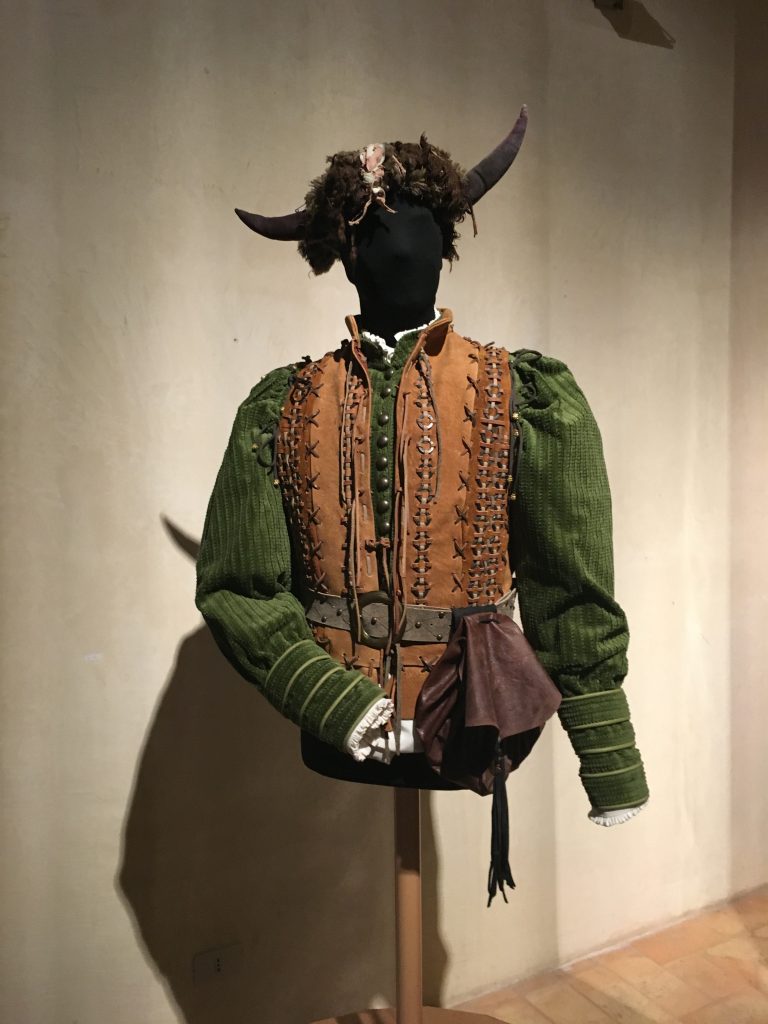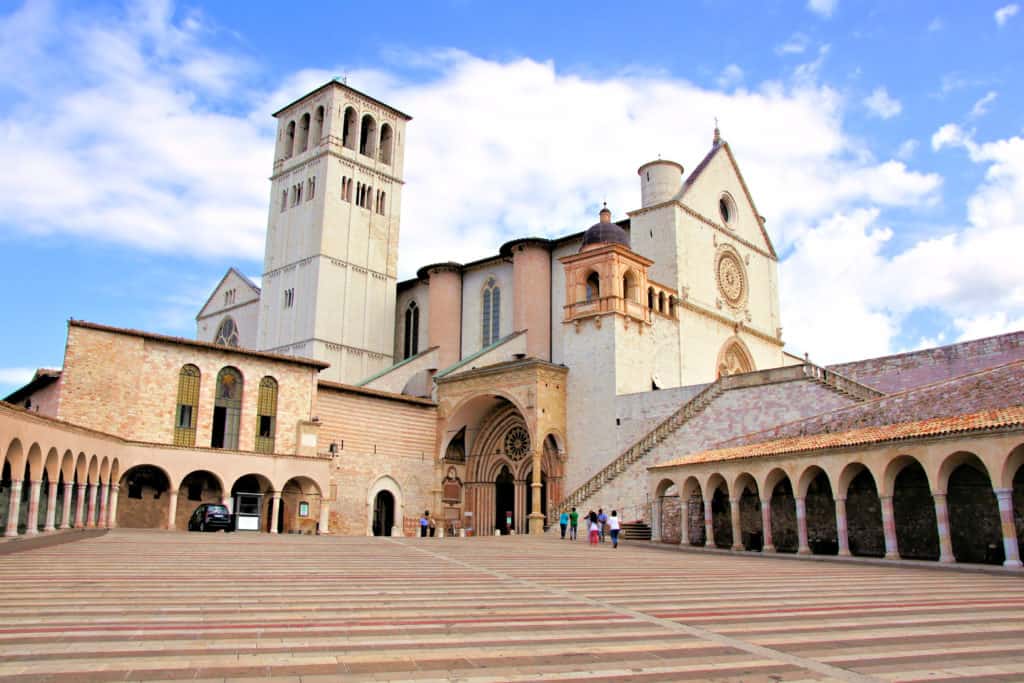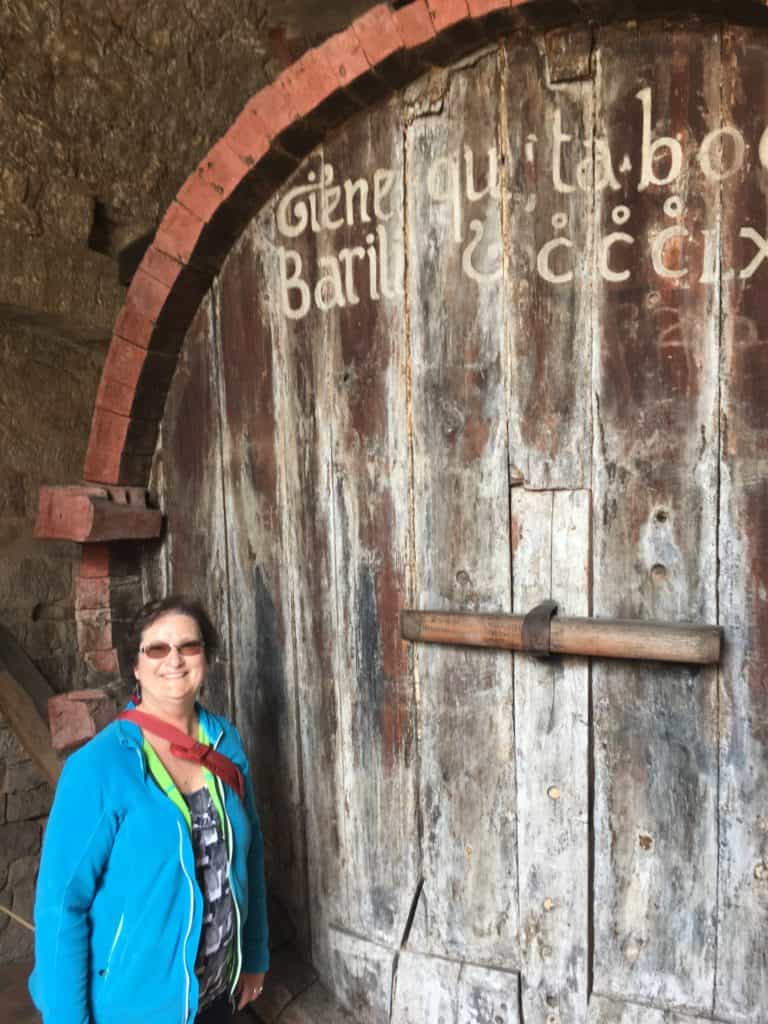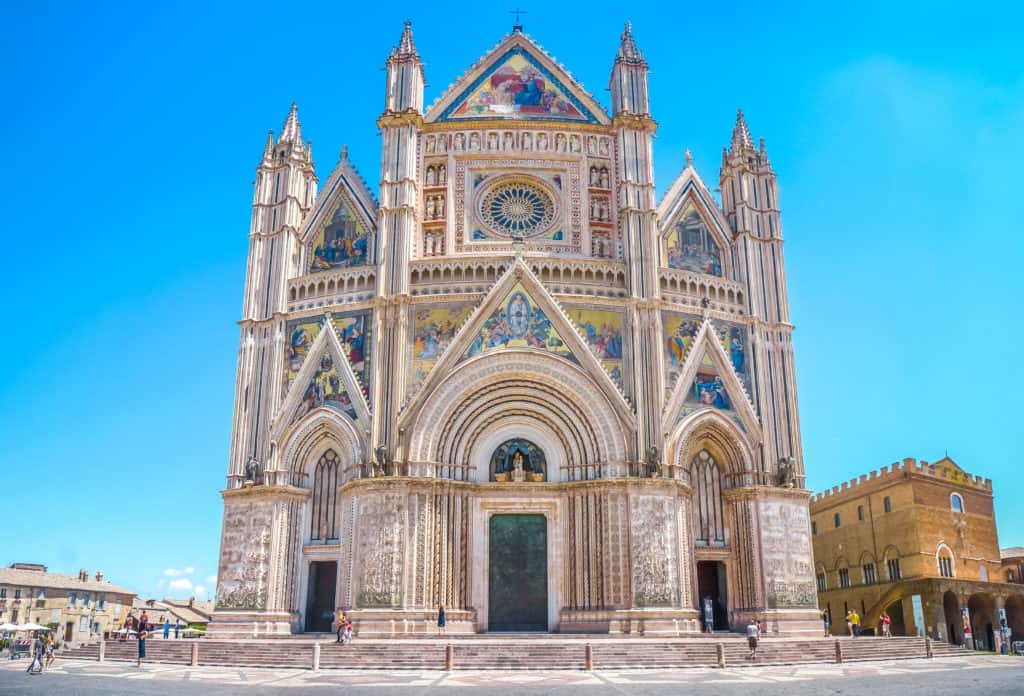Stay at Sant’Antonio Country Resort near Spectacular Montepulciano in Tuscany
Every so often when traveling, serendipity rears its delightful head. The plans you’ve made go awry, but instead of facing disaster, you step into something even more wonderful.
That happened to us while traveling a few kilometers out of the fabled town of Montepulciano in Tuscany.
Read about our day leading up to finding Sant’Antonio Country Resort or cut to the chase and scroll down to my review!
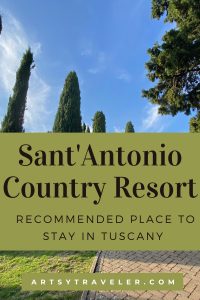
Lead-Up to Montepulciano
In Rome, we woke up to the first rainy day of our time in Italy (we’d been in the country two weeks). The clanging at the building site next door to our apartment was slightly muted, much to our relief.
After nine nights, it was time to leave the Eternal City. We were all packed and waiting at the door for our 10:30 Uber. Horrendous Rome traffic delayed him over half an hour, but when he finally arrived, Roberto was cheerful and helpful.
Thirty minutes later, he dropped us at the garage where we found the same smiling attendant and our car already out of its slot and waiting for us to drive it away. What a wonderful service. Shout-out to Parclick!
Arrival in Montepulciano
We made it out of Rome without even one wrong turn—perhaps a record for us! Soon, we were back on the Autostrade speeding north to Tuscany. Ah, Tuscany! It’s one of my favorite places in Europe which is why I set my first novel, The Towers of Tuscany, there. I’m working on two more novels set in Tuscany; perhaps on this trip I’d find more inspiration to finish them.
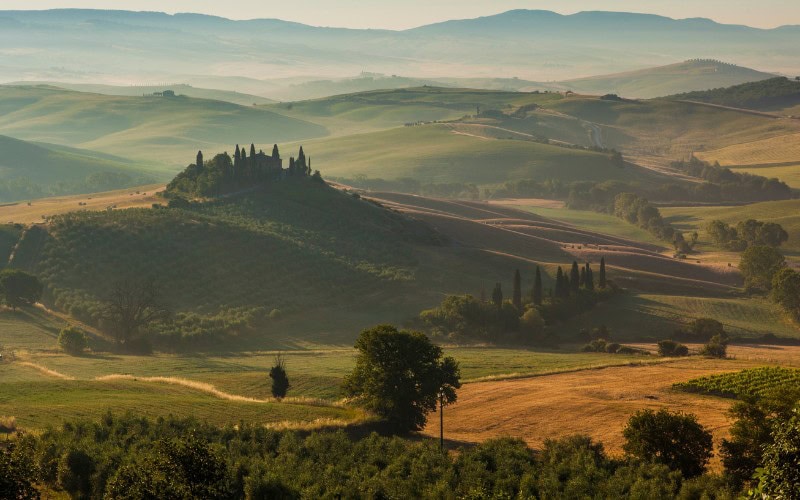
After a smooth two-hour drive, we pulled up in front of our hotel for two nights—a lovely Albergo about five minutes outside Montepulciano. Neither of us had ever visited Montepulciano and so decided that on this trip we’d skip our usual visits to San Gimignano and Siena and see something new. Good call!
No Room at the Inn
Except we had a few more hoops to go through before the full Tuscan experience would wash over us.
The proprietor of the hotel looked puzzled when I give him my name. He searched his list, frowned, shook his head.
No, Signora.
Oh dear. I pulled out my phone and showed him my booking on booking.com and said in a somewhat aggrieved tone, We’ve definitely booked! See – October 13 to 15! A little shiver of doubt ran through me as I said this. Wasn’t today October 13?
He peered at my phone. Ah. That’s next year, Signora.
Oh.
And of course the place was full.
Plan B
We piled back into the car and started driving toward a place he suggested. Within three minutes–Google Maps notwithstanding–we were lost. We’ve found that Google Maps doesn’t always work well in the Italian countryside, or in the cities for that matter.
Gregg pulled over and I consulted my phone to see what booking.com had to offer. Fortunately, several options popped up around Montepulciano. We wanted something outside the town in a country setting. Over the years, we’ve had our share of disasters when we’ve booked places within the medieval walls of an ancient town. If you’ve ever done so, you’ll know what I mean. And if you haven’t, trust me.
If you’re driving, never book a place inside the walls of a medieval city. Ever.
Success
After a few searches, I selected Sant’Antonio Country Resort. It ticked all the boxes–countryside, looked pretty, nice big rooms, mid-range price, and best of all, available. I booked it, paid for it, and entered the address in Google Maps. The suggested route took us around Montepulciano where a band of red showed traffic congestion. Another route that was supposed to be slower but seemingly more direct took us across country in a straight line.
Throwing caution to the wind, I decided to ignore Google Maps and the nice GPS lady and directed Gregg along the other route.
On Our Way Again
Soon, we were bumping along dirt roads cleaving through vine-studded fields punctuated by deep green cypresses. In the distance, a row of pale blue Tuscan mountains floated in a smoky autumnal haze.
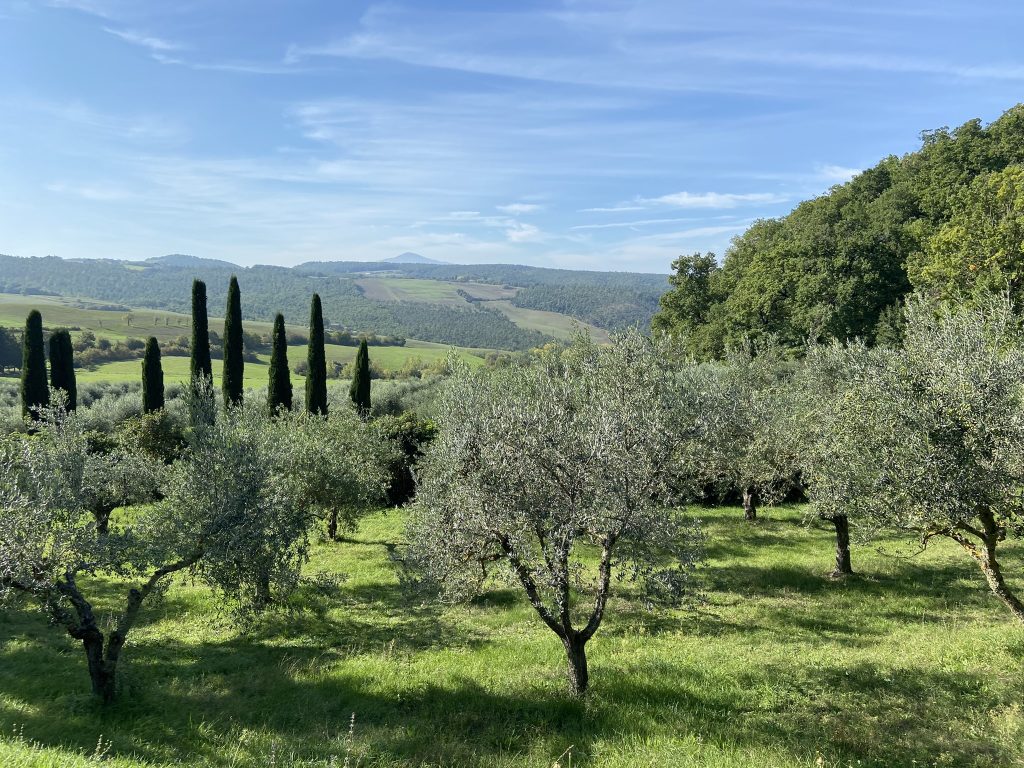
It was the Tuscany of our dreams. And fortunately, the road, although unpaved, was not undrivable. So, at a leisurely and extremely scenic pace, we eventually arrived at a massive iron gate—the entrance to the grandly named Sant’Antonio Country Resort.
I wasn’t sure what to expect.
I pressed the intercom and a voice told us to drive in as the gates slowly opened. The owners were incredibly welcoming and friendly. They informed us that never in the history of their working with booking.com had anyone ever booked on the website on the same day they wanted to stay. Apparently, the system is designed to reject such bookings.
But for some unexplainable reason, a glitch in the system let us through. How fortuitous!
Heaven at Sant’Antonio Country Resort: My Review
Sant’Antonio Country Resort is everything we love about Tuscany. Here’s why:
- Located out in the country but still within a short drive of an iconic hilltown, in this case, Montepulciano
- Plenty of free parking and easy to drive to
- Gorgeous self-contained units in a renovated medieval convent
- Most units with terraces
- A swimming pool and many outdoor areas on the grounds
- Plenty of country walks and scenic drives nearby
- Stunning vistas of olive trees and cypresses at every turn
- Excellent reviews
- Friendly and accommodating owners who speak English and genuinely love sharing their little piece of heaven with their guests
And at the Sant’Antonio Country Resort, there is even a friendly fox that likes to steal shoes. We were warned not to leave our shoes outside our door because the fox would take them. What the fox does with the shoes is a mystery, but we agreed not to find out.
Our Accommodation at Sant’Antonio Country Resort
The owners very kindly upgraded us to a two-bedroom apartment complete with very comfortable living room, a big dining room, a large bed in the master bedroom, a second smaller bedroom where we stashed the luggage, and two bathrooms.
Oh, and two terraces.
Here are a few photographs of the place.
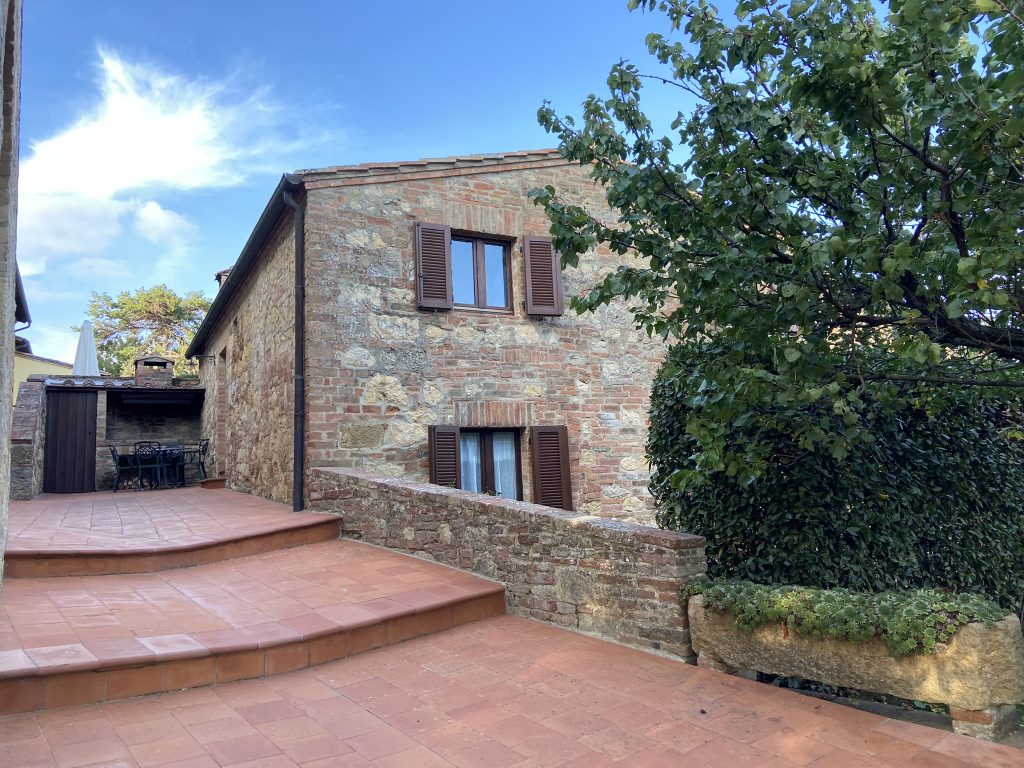
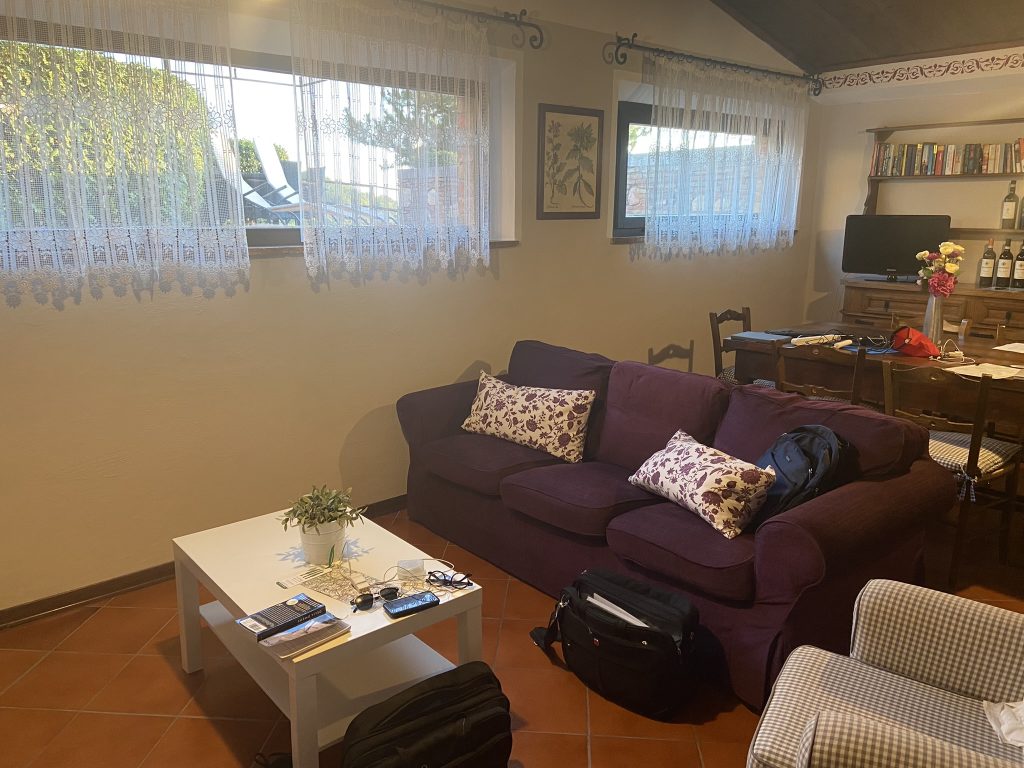
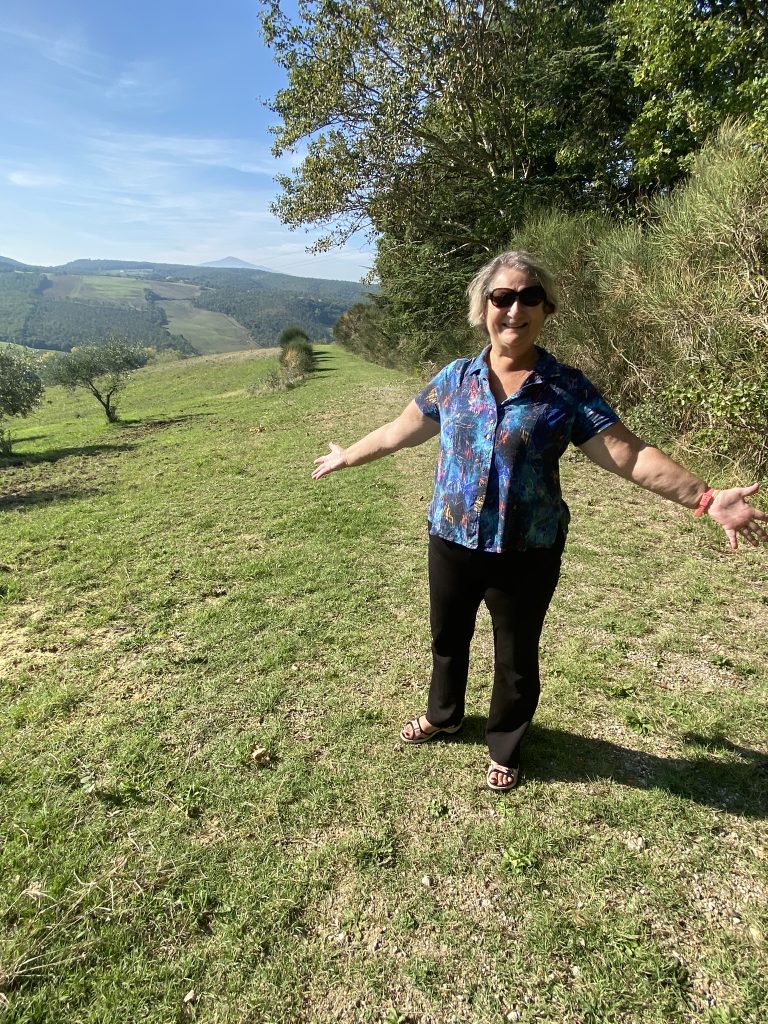
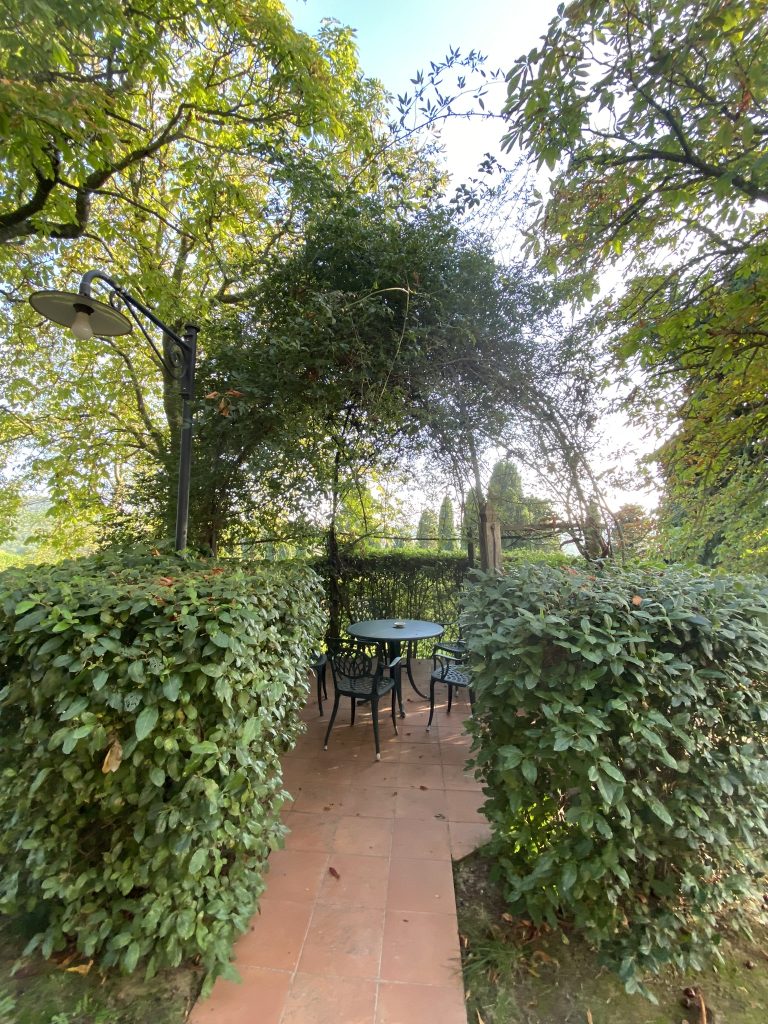
Memorable Dinners in Montepulciano
After a few hours reveling in our good luck, we left around 5 pm for a drive up to Montepulciano which we discovered is a lovely, calm town, much less frenetic than other Tuscan towns such as San Gimignano.
The deal here is food and wine—lots of wine, particularly the vino nobile of Montepulciano. We stopped at a little bar and I sampled my first glass while Gregg had a cappuccino. With about an hour to kill before our dinner reservation (kindly made by our hosts at Sant’Antonio Country Resort), we climbed the cobbled streets to reach the piazza. It was nearly empty in the early evening. I imagine that during the day, the place is mobbed.
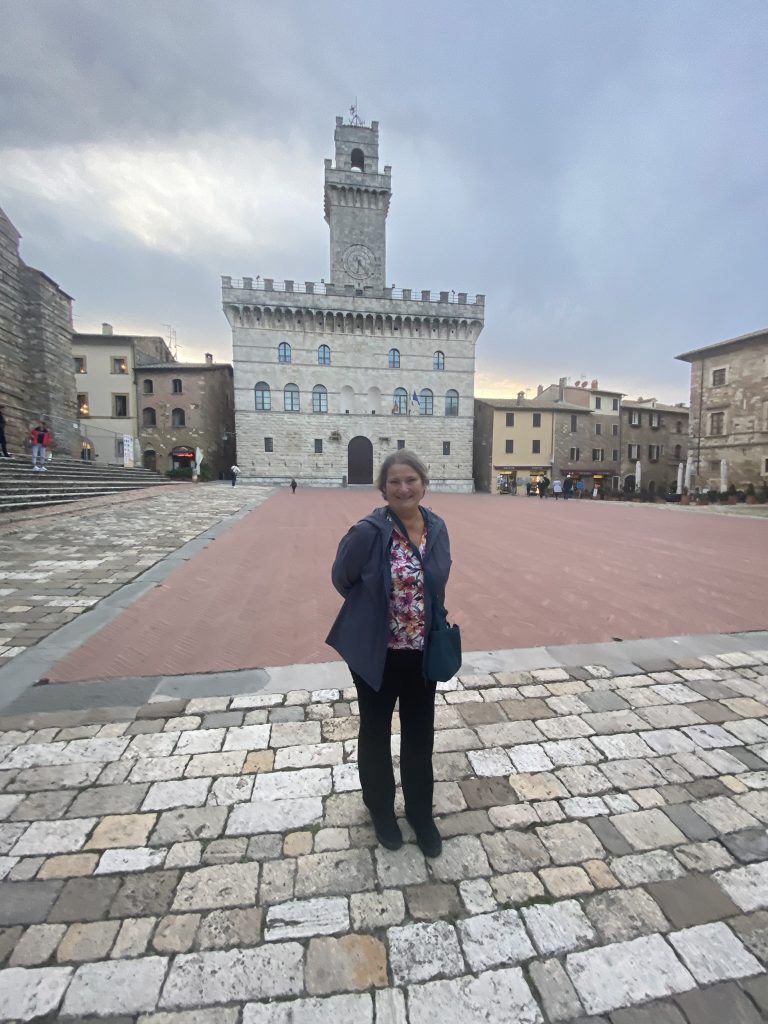
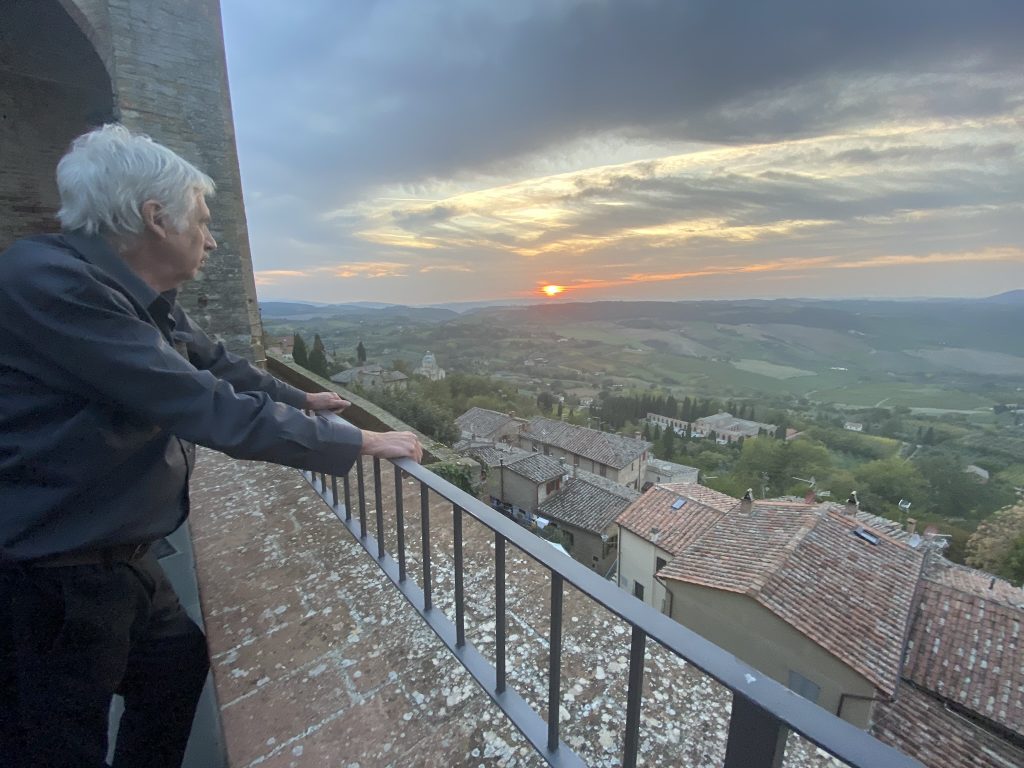
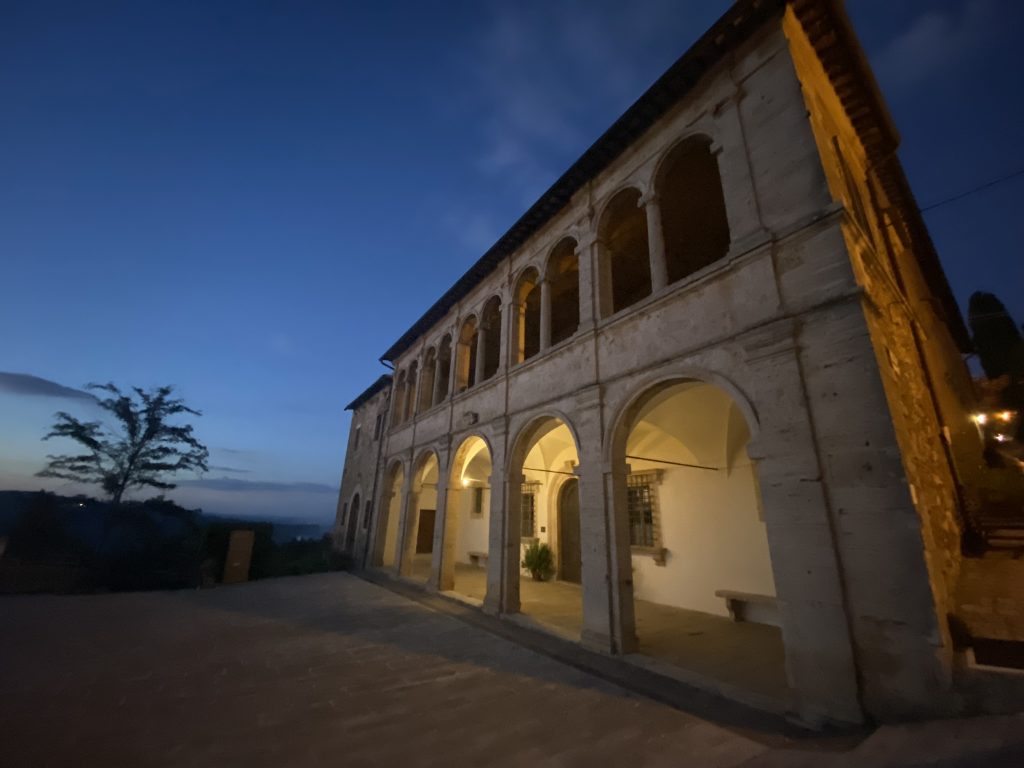
Dinner at Porta di Bacco was served in an ancient room replete with a column (is it Roman?) and brick arches. The wine and food were predictably excellent. I ordered gnocchi with a duck ragout—hearty and tasty. The food here is different from Rome – more country-style and a nice change from the usual fare offered in Roman trattorias, which can get a bit repetitive.
After a moonlit stroll back to the car, we faced the challenging drive in the dark back to Sant’Antonio Country Resort. A drive that in daylight is quick and easy took on a different tenor at night. We made a few wrong turns but eventually got back on track and were soon pulling into our temporary home.
The next night we dined at Ristorante La Grotta, outside the city walls. Located in a 16th-century building, the restaurant was directly opposite the Church of San Biagio, a noted example of Tuscan Renaissance architecture.
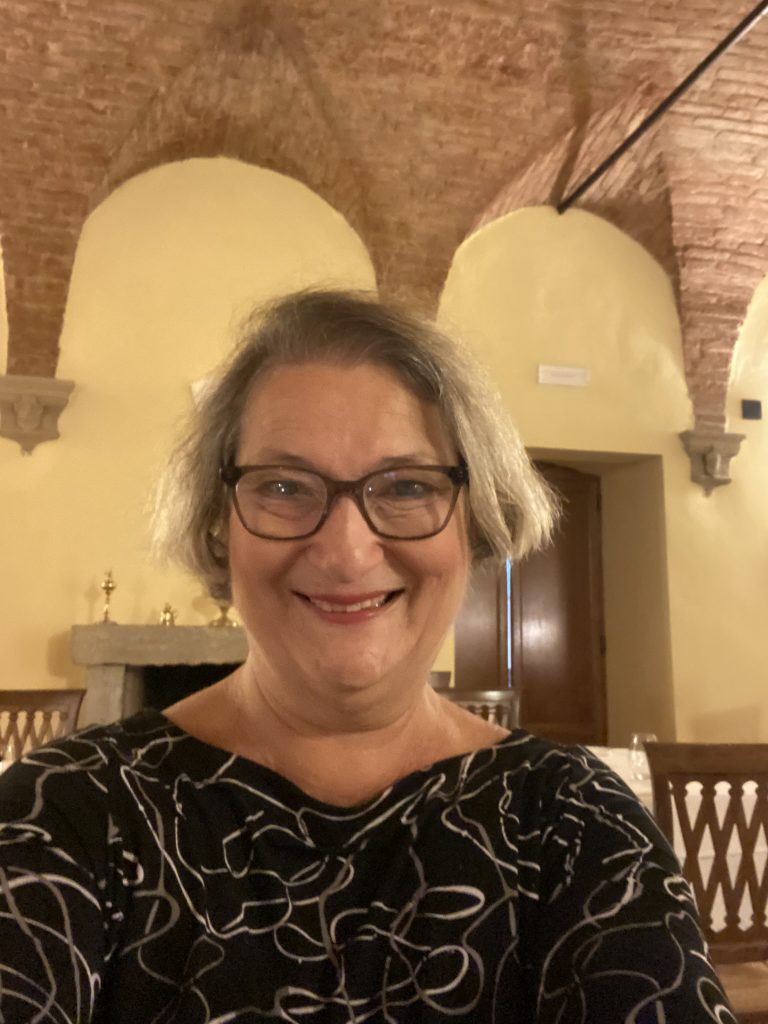
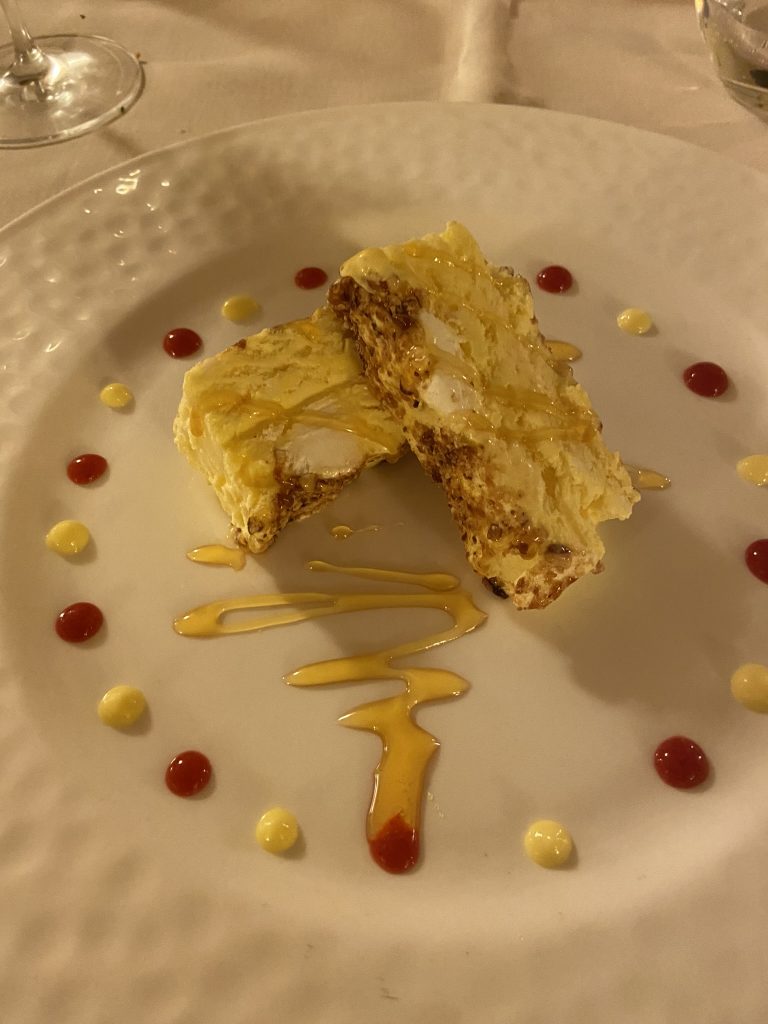
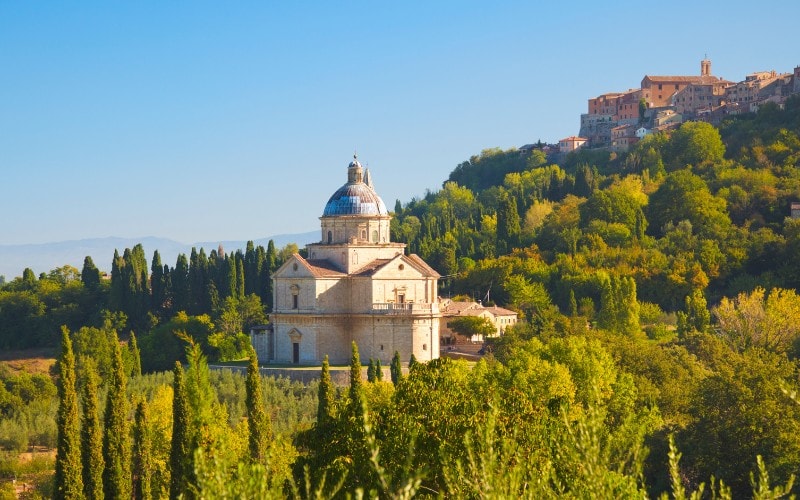
I highly recommend Ristorante La Grotta for a Tuscan splurge. The service was impeccable and the food excellent. It was the most expensive meal we had in nine weeks, but at 110 Euros for three gourmet courses and excellent wine, it was an amazing bargain!
Enjoying Sant’Antonio Country Resort
While at Sant’Antonio Country Resort, we met some fellow Canadians who shared that they’ve visited before, and love returning. I can’t say I blame them!
We spent our day “off” from traveling by taking walks around the property (it stretches for several hectares), enjoying a drive along small country roads in the area, and generally chilling out. We even saw the fox!
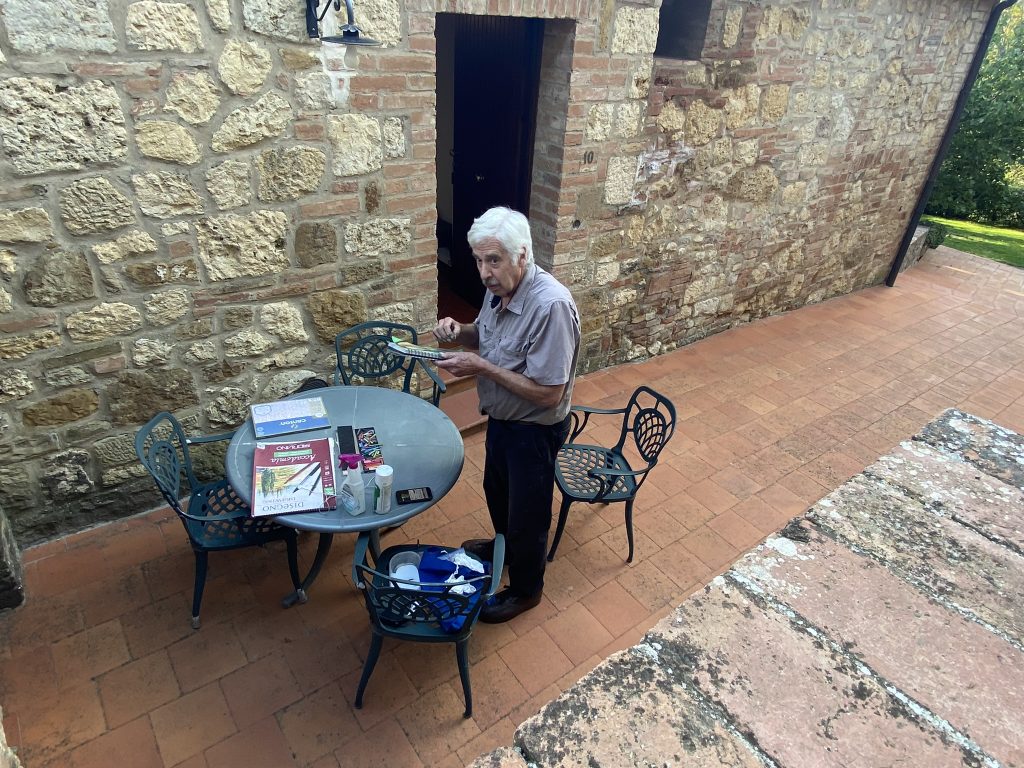
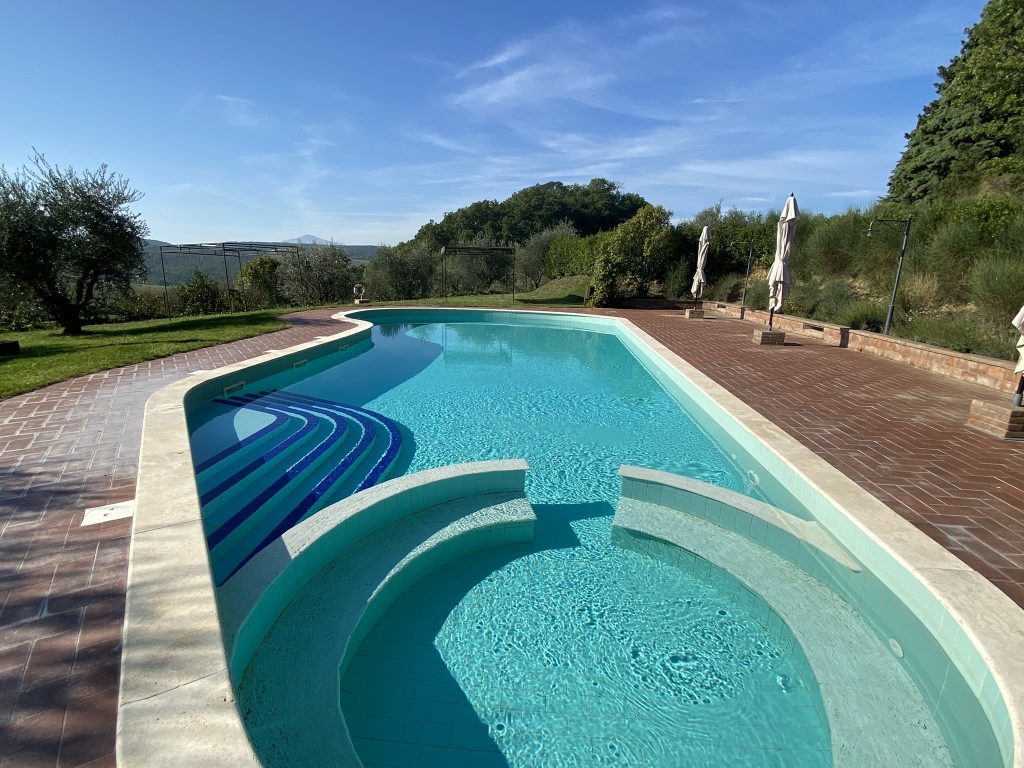
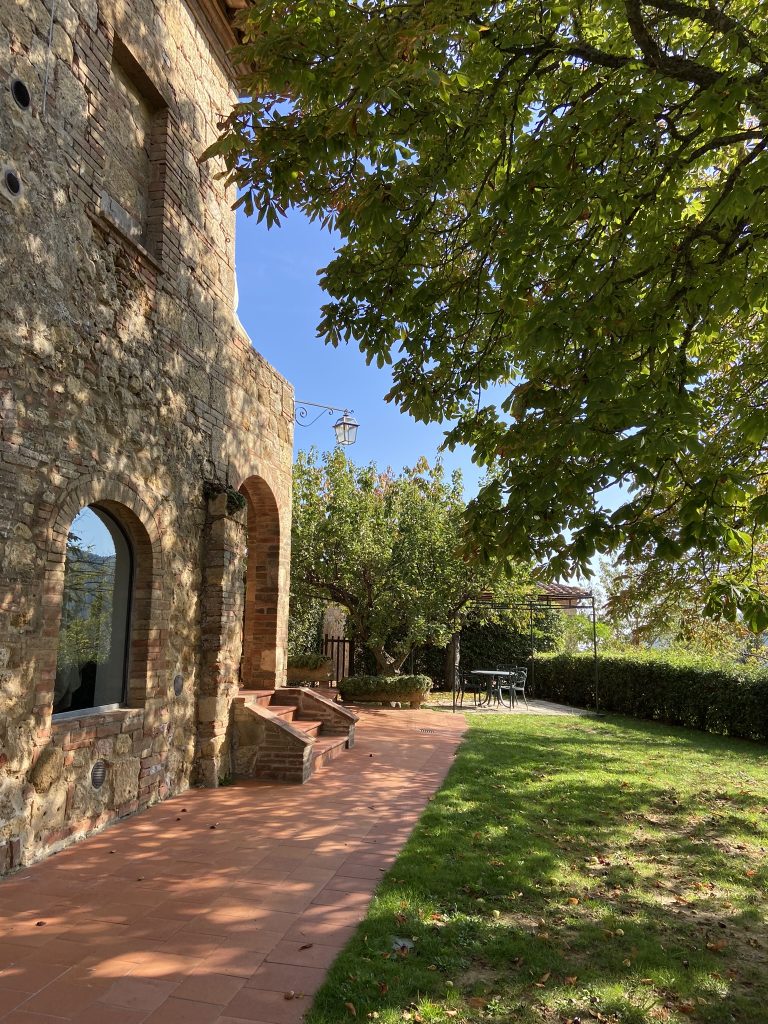
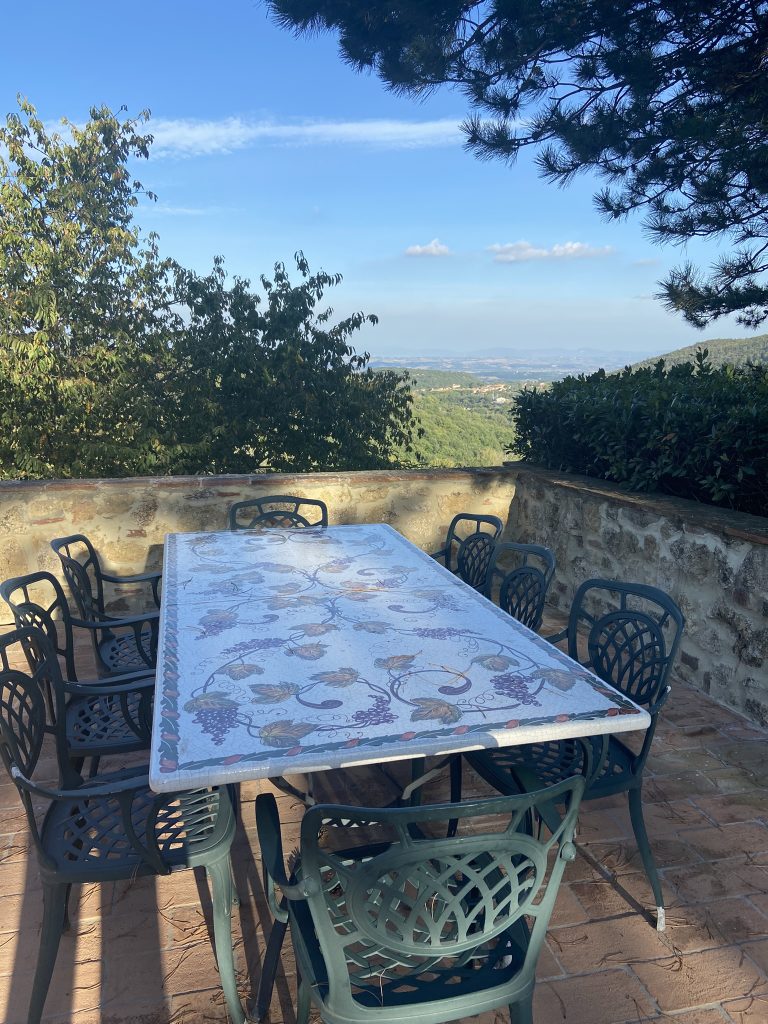
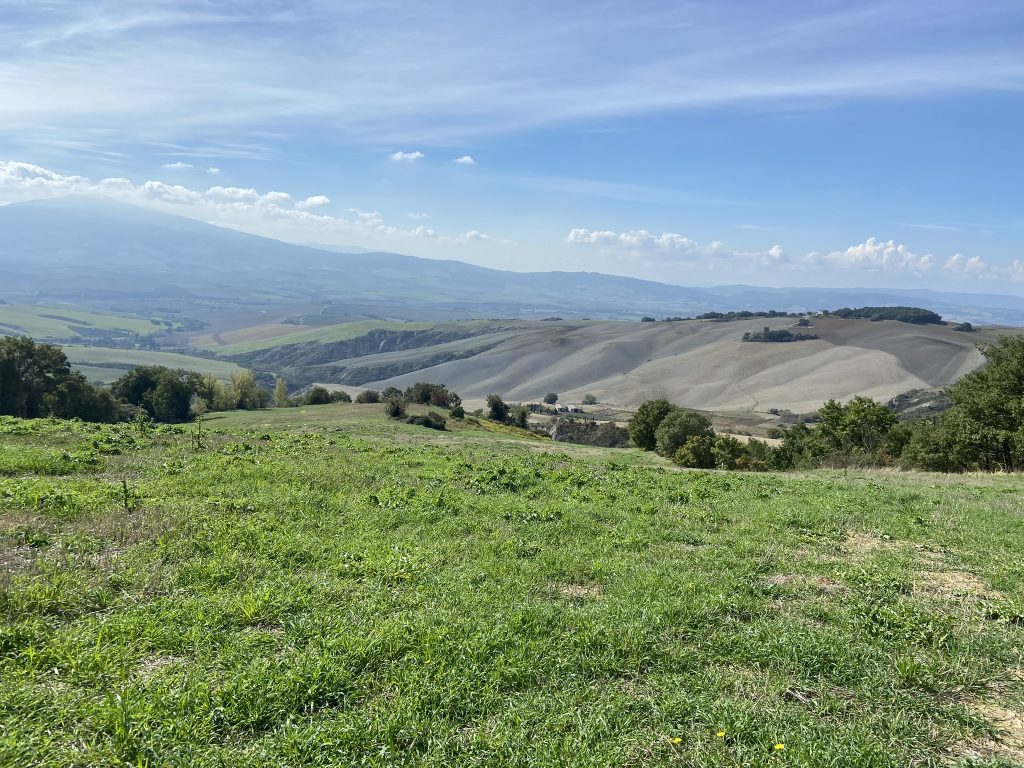
Should You Visit Sant’Antonio Country Resort?
If you’re looking for a Tuscan retreat that is reasonably priced (albeit slightly on the high side, but worth it), set in a glorious landscape, and owned by very helpful and friendly hosts, then I can’t recommend Sant’Antonio Country Resort highly enough.
For other places in and around Montepulciano, click the map below.
Tours of the Tuscan Countryside
Many years ago, I took a wine tour of Tuscany that included a visit to a vineyard near Montepulciano. If you have a day to spare while visiting Tuscany, I highly recommend booking a wine tour. Here are a few suggestions.
Other Posts about Tuscany
Over the past three decades, I’ve visited Tuscany at least a dozen times, and every time I discover new wonders to enjoy and fabulous places to stay. For more suggestions about Tuscany, check out these posts:
- Recommended Places to Stay in Italy That Will Make Great Memories
- Exploring San Gimignano in Tuscany
- Exploring Tuscany, Umbria and La Dolce Vita
- A Visit with Tuscan Artist Silvia Salvadori in Arezzo, Tuscany
- Art Masterpieces in Tuscany You Don’t Want to Miss
Do you have a favorite place to stay in Tuscany? Let us know in the Comments below.
